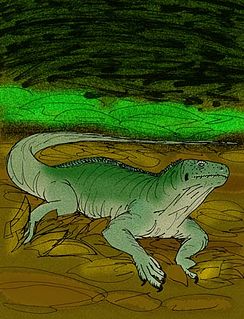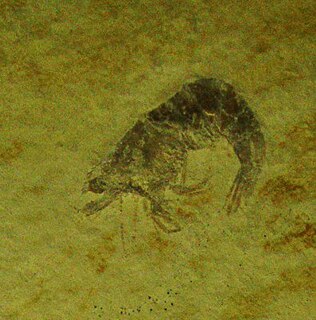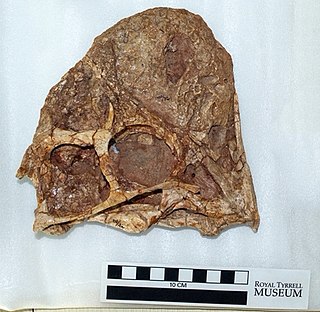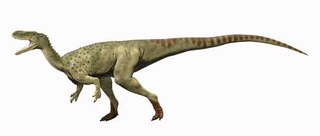 W
WAtrociraptor is a genus of dromaeosaurid theropod dinosaur from the Late Cretaceous of Alberta, Canada.
 W
WBonitasaura is a titanosaurian dinosaur hailing from uppermost layers of the Late Cretaceous (Santonian) Bajo de la Carpa Formation, Neuquén Group of the eastern Neuquén Basin, located in Río Negro Province, Northwestern Patagonia, Argentina. The remains, consisting of a partial sub-adult skeleton jumbled in a small area of fluvial sandstone, including lower jaw with teeth, partial vertebrae series and limb bones, were described by Sebastian Apesteguía in 2004.
 W
WBrachylophus gibbonsi is an extinct species of large iguanid lizard from Tonga in the South Pacific Ocean. Its remains have been found associated with cultural sites on Lifuka, four other islands in the Haʻapai group, and Tongatapu. It was consumed by the early Tongans and probably became extinct within a century of human colonization of the archipelago 2800 years ago.
 W
WDilong is a genus of basal tyrannosauroid dinosaur. The only species is Dilong paradoxus. It is from the Lower Cretaceous Yixian Formation near Lujiatun, Beipiao, in the western Liaoning province of China. It lived about 126 million years ago.
 W
WEkrixinatosaurus is a genus of abelisaurid theropod which lived approximately 100 to 97 million years ago during the Late Cretaceous period. Its fossils have been found in Argentina. Only one species is currently recognized, Ekrixinatosaurus novasi, from which the specific name honors of Dr. Fernando Novas for his contributions to the study of abelisaurid theropods.
 W
WEobalaenoptera is an extinct genus of baleen whale belonging to Balaenopteroidea.
 W
WGerontoformica is an extinct genus of stem-group ants. The genus contains thirteen described species known from Late Cretaceous fossils found in Asia and Europe. The species were described between 2004 and 2016, with a number of the species formerly being placed into the junior synonym genus Sphecomyrmodes.
 W
WHomo floresiensis is a species of small archaic human that inhabited the island of Flores, Indonesia until the arrival of modern humans about 50,000 years ago.
 W
WHuaxiagnathus is a genus of theropod dinosaur from the Lower Cretaceous of China. It was a compsognathid, large for that group at about half a meter longer than Compsognathus and larger specimens of Sinosauropteryx, with the largest specimen about 1.8 meters in length.
 W
WIanthodon is an extinct genus of basal sphenacodont synapsids from the Late Carboniferous about 304 million years ago. The taxon was discovered and named by Kissel & Reisz in 2004. The only species in the taxon, Ianthodon schultzei, was found by separating it from a block that also contained the remains of Petrolacosaurus and Haptodus. The evolutionary significance of the taxon wasn't realized until a publication in 2015. The fossil of this organism was discovered in Garnett, Kansas.
 W
WKhoratpithecus is an extinct genus of pongin primates that lived during the late Miocene in Myanmar and Thailand.
 W
WKoelga is an extinct genus of prawn in the order Decapoda. It contains the species Koelga curvirostris and Koelga muensteri.
 W
WLimaysaurus is a genus represented by a single species of rebbachisaurid sauropod dinosaurs, which lived during the mid-Cretaceous period, about 99.6 to 97 million years ago, in the Cenomanian, in what is now South America.
 W
WLithostrotia is a clade or family of derived titanosaur sauropods that lived during the Early Cretaceous and Late Cretaceous. The group was defined by Unchurch et al. in 2004 as the most recent common ancestor of Malawisaurus and Saltasaurus and all the descendants of that ancestor. Lithostrotia is derived from the Ancient Greek lithostros, meaning "inlaid with stones", referring to the fact that many known lithostrotians are preserved with osteoderms. However, osteoderms are not a distinguishing feature of the group, as the two noted by Unchurch et al. include caudal vertebrae with strongly concave front faces (procoely), although the farthest vertebrae are not procoelous.
 W
WLobalopex is an extinct genus of biarmosuchian therapsids belonging to the family Burnetiidae.
 W
WLongirostravis is a genus of enantiornithean birds which existed during the early Cretaceous period and is known from fossils found in the middle or upper Yixian Formation in Yixian County, People's Republic of China. It is known from a single specimen housed in the collections of the Institute of Vertebrate Paleontology and Paleoanthropology representing the type species Longirostravis hani.
 W
WLusorex is an extinct genus of heterosoricid shrew that lived in China during the Miocene. The only species is L. taishanensis, fossils of which are kept at the Paleozoological Museum of China.
 W
WMei is a genus of duck-sized troodontid dinosaur first unearthed by paleontologists from the Yixian Formation in Liaoning, China in 2004. Mei lived during the Early Cretaceous period. The binomial name of its only species, Mei long, means sleeping dragon.
 W
WMirischia is a small genus of compsognathid theropod dinosaur from the Albian stage of Brazil.
 W
WPaleoleishmania is an extinct genus of kinetoplastids, a monophyletic group of unicellular parasitic flagellate protozoa. At present it is placed in the family Trypanosomatidae. The genus contains two species, Paleoleishmania neotropicum and the type species Paleoleishmania proterus.
 W
WPaucipodia inermis is a lobopod known from the Lower Cambrian Chengjiang lagerstätte. Its gut is puzzling; in some places, it is preserved in three dimensions, infilled with sediment; whereas in others it may be flat. These cannot result from phosphatisation, which is usually responsible for three-dimensional gut preservation, for the phosphate content of the guts is under 1% – the contents comprise quartz and muscovite. Its fossils do not suggest it had any sclerites, especially when compared with the related Hallucigenia.
 W
WPlesiopterys is an extinct genus of plesiosaur native to Germany.
 W
WPneumodesmus newmani is a species of millipede that lived in the Paleozoic. Its exact age is uncertain. It was originally interpreted as living 428 million years ago, in the Late Silurian; however, the study conducted by Suarez et al. (2017) indicates that it actually lived in the Early Devonian (Lochkovian). It is the first myriapod, and the oldest known creature to have lived on land. It was discovered in 2004, and is known from a single specimen from Stonehaven, Aberdeenshire, Scotland.
 W
WPrenoceratops, is a genus of ceratopsian dinosaur from the Late Cretaceous Period. Its fossils have been found in the upper Two Medicine Formation in the present-day U.S. state of Montana, in Campanian age rock layers that have been dated to 74.3 million years ago.
 W
WProgalesaurus is an extinct genus of galesaurid cynodont from the early Triassic. Progalesaurus is known from a single fossil of the species Progalesaurus lootsbergensis, found in the Lystrosaurus Assemblage Zone of the Balfour Formation. Close relatives of Progalesaurus, other galesaurids, include Galesaurus and Cynosaurus. Galesaurids appeared just before the Permian-Triassic extinction event, and disappeared from the fossil record in the Middle-Triassic.
 W
WRinchenia is a genus of oviraptorid dinosaur from the Late Cretaceous Nemegt Formation of Mongolia. The type species, Rinchenia mongoliensis, was originally classified as a species within the genus Oviraptor, but a re-examination by Barsbold in 1997 found differences significant enough to warrant a separate genus. The name Rinchenia was coined for this new genus by Barsbold in 1997, though he did not describe it in detail, and the name remained a nomen nudum until used by Osmólska et al. in 2004.
 W
WRugops is a genus of abelisaurid theropod dinosaur that inhabited what is now Africa approximately 95 million years ago, during the Cenomanian stage of the Late Cretaceous.
 W
WSinusonasus is a genus of dinosaurs from the Early Cretaceous Period, recovered from the Yixian Formation. It lived in what is now the Liaoning Province of China. Sinusonasus was a theropod, specifically a troodontid dinosaur.
 W
WSpinostropheus is a genus of small carnivorous ceratosaurian theropod dinosaur that lived in the Middle Jurassic period and has been found in the Tiouraren Formation, Niger. The type and only species is S. gautieri.
 W
WTalenkauen is a genus of basal iguanodont dinosaur from the Campanian age. Late Cretaceous Cerro Fortaleza Formation, formerly known as the Pari Aike Formation of Patagonian Lake Viedma in the Austral Basin of Santa Cruz, Argentina. It is based on MPM-10001, a partial articulated skeleton missing the rear part of the skull, the tail, and the hands. Its most unusual feature is the presence of several thin mineralized plates along the sides of the ribs.
 W
WTazoudasaurus is a genus of vulcanodontid sauropod dinosaurs hailing from the Early Jurassic, located in the High Atlas Mountains of Morocco in North Africa. Along with Ohmdenosaurus is one of the two formally described sauropods from the Toarcian of the northern hemisphere.
 W
WTemnoxa molluscula is a small creature approximately 8 mm wide found in the Ediacaran period in Russia. The Temnoxa has a resemblance to a vertically cut penny bun mushroom. Due to the lack of information regarding the fossils of this organism, researchers are unable to place Temnoxa molluscula into any known phylum. The genus was originally discovered by Russian paleontologist Andrey Yu. Ivantsov in 2004.
 W
WThectardis avalonensis is a triangular-shaped member of the Ediacaran biota, dating from 575 to 565 million years ago. The organism took the form of an elongated cone with a central depression, and its apex was anchored to the substrate.
 W
WUberabasuchus is an extinct genus of crocodylomorph from the Late Cretaceous Marília Formation of Brazil. It was about 2.5 metres (8.2 ft) long and appears to have a high skull like that of the sebecosuchians, but differs from them in having teeth with circular cross-section. Thus, rather than slicing flesh and blood vessels, it is likely to have inflicted powerful crushing bites. The post-crania and the geology suggesting an arid climate indicate that Uberabasuchus was likely a terrestrial predator.
 W
WUnaysaurus is a genus of unaysaurid sauropodomorph herbivore dinosaur. Discovered in southern Brazil, in the geopark of Paleorrota, in 1998, and announced in a press conference on Thursday, December 3, 2004, it is one of the oldest dinosaurs known. It is closely related to plateosaurid dinosaurs found in Germany, which indicates that it was relatively easy for species to spread across the giant landmass of the time, the supercontinent of Pangaea.